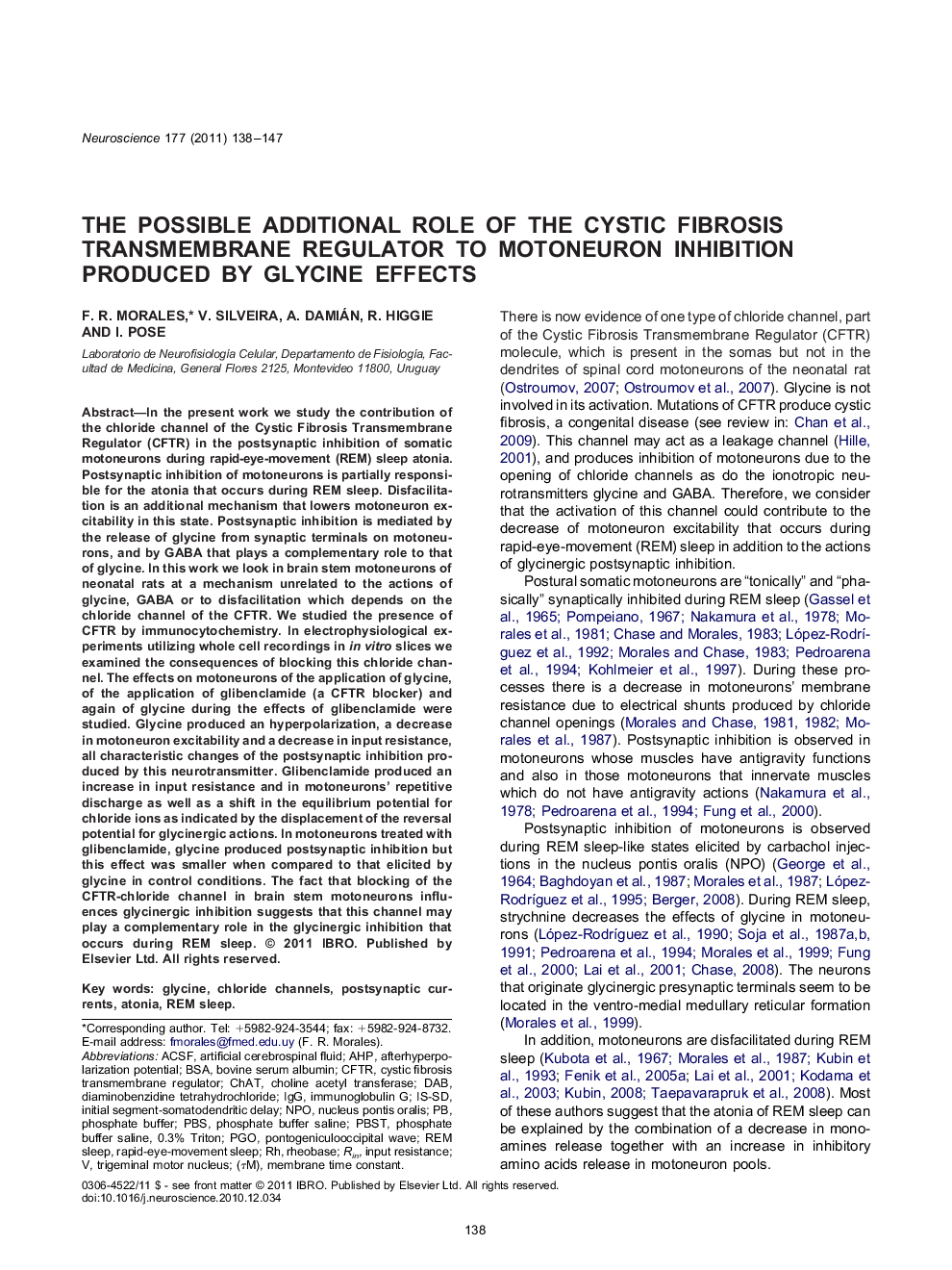| کد مقاله | کد نشریه | سال انتشار | مقاله انگلیسی | نسخه تمام متن |
|---|---|---|---|---|
| 6276505 | 1614899 | 2011 | 10 صفحه PDF | دانلود رایگان |

In the present work we study the contribution of the chloride channel of the Cystic Fibrosis Transmembrane Regulator (CFTR) in the postsynaptic inhibition of somatic motoneurons during rapid-eye-movement (REM) sleep atonia. Postsynaptic inhibition of motoneurons is partially responsible for the atonia that occurs during REM sleep. Disfacilitation is an additional mechanism that lowers motoneuron excitability in this state. Postsynaptic inhibition is mediated by the release of glycine from synaptic terminals on motoneurons, and by GABA that plays a complementary role to that of glycine. In this work we look in brain stem motoneurons of neonatal rats at a mechanism unrelated to the actions of glycine, GABA or to disfacilitation which depends on the chloride channel of the CFTR. We studied the presence of CFTR by immunocytochemistry. In electrophysiological experiments utilizing whole cell recordings in in vitro slices we examined the consequences of blocking this chloride channel. The effects on motoneurons of the application of glycine, of the application of glibenclamide (a CFTR blocker) and again of glycine during the effects of glibenclamide were studied. Glycine produced an hyperpolarization, a decrease in motoneuron excitability and a decrease in input resistance, all characteristic changes of the postsynaptic inhibition produced by this neurotransmitter. Glibenclamide produced an increase in input resistance and in motoneurons' repetitive discharge as well as a shift in the equilibrium potential for chloride ions as indicated by the displacement of the reversal potential for glycinergic actions. In motoneurons treated with glibenclamide, glycine produced postsynaptic inhibition but this effect was smaller when compared to that elicited by glycine in control conditions. The fact that blocking of the CFTR-chloride channel in brain stem motoneurons influences glycinergic inhibition suggests that this channel may play a complementary role in the glycinergic inhibition that occurs during REM sleep.
Research highlightsâ¶The Cystic Fibrosis Transmembrane Regulator is present in brainstem motoneurons. â¶The blockade of this chloride channel reduces glycinergic postsynaptic inhibitory actions. â¶We postulate that this molecule may participate in motoneuron inhibition during REM sleep.
Journal: Neuroscience - Volume 177, 17 March 2011, Pages 138-147